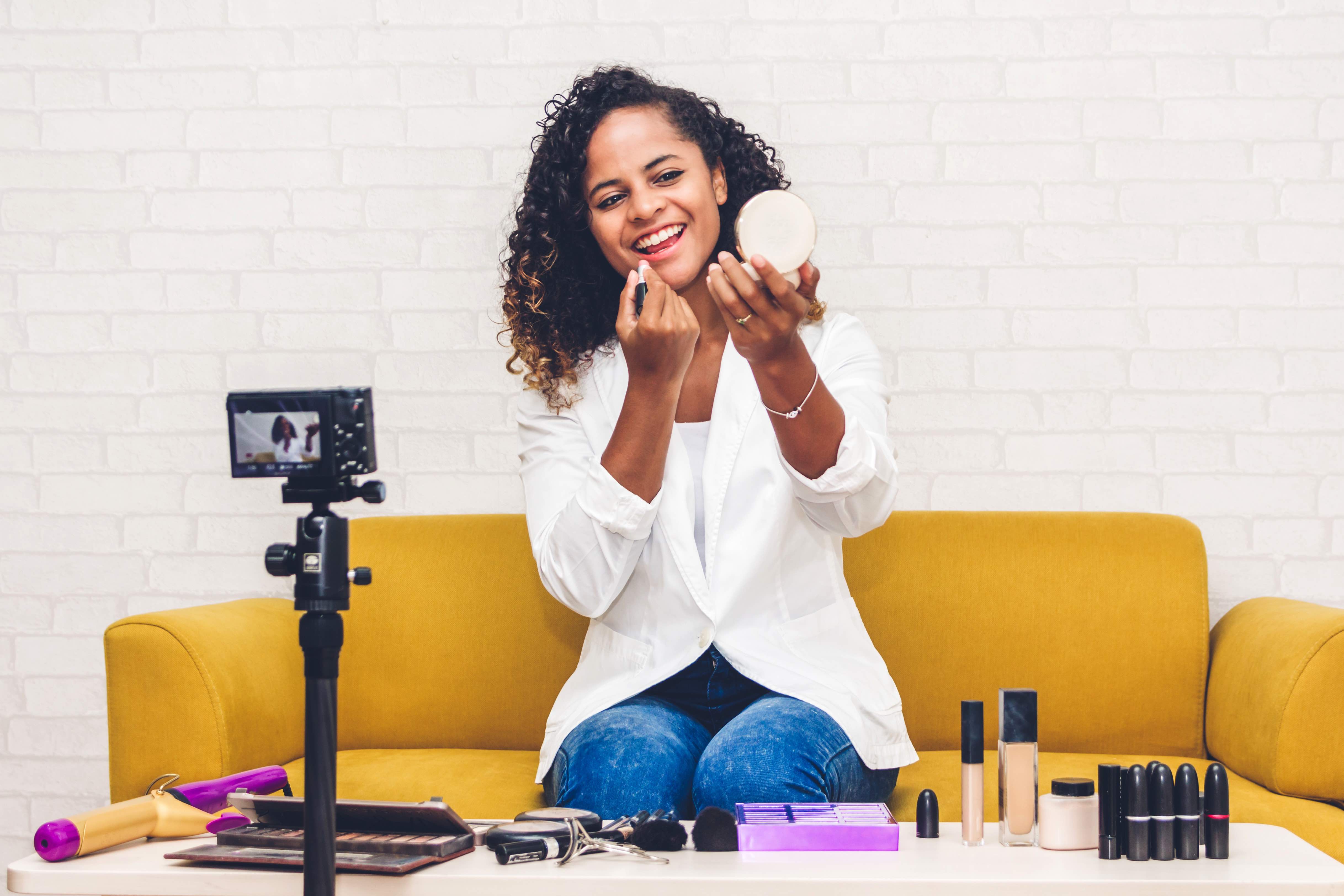
Beauty Products, Shopping Dynamics And Influencer Strategies That Will Dominate In 2023
Darian Symone Harvin, beauty editor at large for Image at the Los Angeles Times, predicts consumers may start to reevaluate where they shop for beauty products next year as retail spending contracts in a slowing economy.
“Every time we walk out the door, we’re always spending money. So, maybe for a really long time you were the girl who only shopped at Sephora, but now you are reconsidering where you’re going because of the gas mileage,” she said.” Or maybe you never bought your beauty products on Amazon or at the drugstore, but now you will.”
Harvin participated in last Wednesday’s Beauty Independent In Conversation webinar with Nicole Clay, co-founder and CMO of Hue, a platform that assists consumers with finding the right beauty products for them, and Shelby Olsen, who works in client and business development at Adit, a retail matchmaking service owned by Beauty Independent parent company Indie Beauty Media Group connecting brands with retailers such as Ulta Beauty, Neiman Marcus, Credo, C.O. Bigelow, Bluemercury and Beauty Heroes.
As consumers shift spending, brands will need to shift resources to stay competitive in an economically challenged environment. Clay believes the shift will affect marketing spend tremendously. “A recession will not slow down the societal shifts and the technological shifts that we’re seeing like the metaverse, TikTok or AI chat functions,” she said. “So, I’m interested to see the innovative ways brands will reallocate their money towards continuing to test and innovate in what will likely be a difficult financial year for everyone.”
Retail PREDICTIONS
Weary of rising costs and dinged profits that characterized 2022, de-risking will be the name of the game for retailers heading into the next year. Selling models allowing them to experiment while managing costs will be added into their businesses at a clip, said Olsen. Consignment, for example, will become more pervasive in the industry, especially for those looking to test emerging brands without making large inventory investments.
To capture and keep value-seeking consumers next year, retail buyers are diversifying offerings by picking up brands and products with lower MSRPs or manufacturer suggested retail prices. “You want the customer to feel like they’re still getting a lot of value in their basket, especially next year going into a possible recession,” said Olsen.
She foresees affordably priced at-home professional skin devices like microcurrent tools and non-fractional lasers priced from $50 to $100 drawing heightened demand from retailers next year. Brands with targeted body products including treatments for scars and keratosis pilaris, for example, will also be top of mind as retailers search for brands and products for their assortments.
The demand for acne products isn’t expected to decelerate anytime soon. Olsen forecasts that 2023 will usher in an update on hyperpigmentation products with cleaner formulations that retailers won’t be able to resist. While not a new trend, multipurpose products that go beyond the standard skincare-makeup hybrids will see a big uptick at retail next year. Olsen said, “Yes to skincare-infused makeup, but how about this balm that has 15 uses for your hair, skin, nails and your baby’s bum?”
Gender-neutral packaging will continue to trend, and both small and large retailers are on the hunt for products with smaller secondary packaging to fit on their shelves. Olsen said, “We’re in a competitive market and shelf space is expensive, so hopefully brands will be more mindful about the size of their packaging next year.”

Influencer Dynamics
The fascination with short-form video content isn’t going anywhere next year. If anything, it could gather momentum as TikTok’s reign persists and short-form video entrants like YouTube Shorts gain users. Against this backdrop, nano-influencers’ prominence will increase as people grab their phones and share their lives. Clay said, “In 2023 and beyond, we all will become influencers.”
The ascendance of nano-influencers is prodded by consumers increasingly turning away from larger influencers and celebrities who’ve crowded beauty. Clay said, “As we see celebrities and big influencers lose their clout in the social proofing of products that now is trickling down to everyday people or nano-influencers because they provide the trust that customers are looking for.”
While definitions vary in the industry, Clay generally characterizes nano-influencers as those with less than 5,000 followers on any platform. In the world of TikTok and virality-driving algorithms, the correlation between follower count and engagement value is no longer straightforward.
“I’ve seen people with 300 followers get 50 million views on a piece of content that they’ve created because it is truly authentic and also entertaining,” said Clay. “And they’re smart with the ways they’re leveraging the trends, whether that be the music they’re using or the video trends that they’re seeing on TikTok.”
Content Considerations
With shoppable user-generated content gaining strength across the internet, Clay forecasts that 2023 will be the year that content and commerce fully merge. She pointed out big tech and e-commerce companies are edging further in that direction. Amazon recently announced the launch of a TikTok-style shopping feature named Inspire, and Google unveiled plans to revamp its search function to pull in more visual content from TikTok and Instagram.
“There will be very few platforms that decouple content from shopping,” said Clay, adding that the video content most likely to go viral next year will manage to be not only helpful and educational, but also entertaining.
The role of content in supporting retail relationships can’t be undervalued. Even a single impactful video can make or break a partnership. Olsen recalled that a brand on the brink of losing a partnership with an Adit retailer created a video that went viral, changing its trajectory at the retailer. She said, “Within 48 hours all their inventory was sold from the retailer, and they issued a new PO to the brand.”
Clay underscored that small brands with limited budgets and expertise shouldn’t feel excluded from producing content that can fuel results. They just have to be shrewd and identify the right strategic partners for the content. “It’s not as inaccessible as people think it is, especially if you’re creating content in mass with nano or micro influencers,” said Clay. “You can get hundreds of videos for less than $3,000 and integrate them into your website with a simple line of code.”
Plus, content doesn’t have to be fresh all the time. Reusing and repurposing videos and soundbites across email, web and social is a tactic that small brands should be doubling down on as they keep a close watch on their expenses next year.





Leave a Reply
You must be logged in to post a comment.